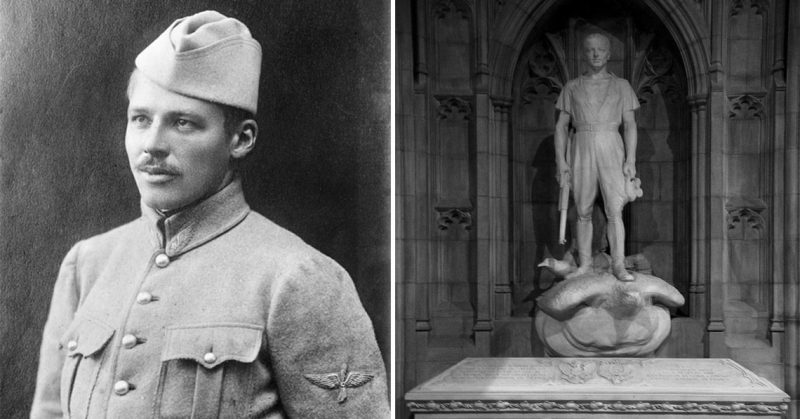Despite there being a seven-foot statue of Norman Prince in the Washington National Cathedral, few visitors linger at the crypt of the young, American pilot who was instrumental in forming the Lafayette Escadrille during the First World War.
Composed mostly of the sons of American magnates, barnstormers, and adventurers, they wanted to fight in the war and loved flying.
Most of them had comfortable lives, said Paul Glenshaw, a filmmaker in Silver Spring, Md., who is laboring on a documentary about the famous squadron. They should not have been there.
Most had enlisted with the French flying corps. Prince, however, wanted an independent American squadron. He got his way with the legion going into action in spring, 1916. Originally composed of 38 fliers, 10 were killed, including Prince. He died three days after a crash on October 15, 1916, from broken legs and a fractured skull after being thrown from his airplane. He was awarded the French Legion of Honor as he lay in a coma.
Recently, a service at the cathedral marked the 100th anniversary of his death.
Following U.S. entry into the war, the Escadrille became part of the American air service. Its members are viewed as the originators of the current air force.
The job may have been glamorous but was also exceedingly dangerous, as well. Their biplanes were shaky, caught fire easily, and parachutes did not exist.
Prince was born in 1887, northeast of Boston, to a rich New England pedigree. His father was a well-known industrialist and investor. He received his education at Harvard and the Groton School. After his graduation from Harvard Law School, he practiced in Chicago. But he became entranced with flying, greatly upsetting his family.
He sometimes thought Prince became spellbound with flying because fate had destined him for the cause that took his life, his father wrote some time later, The Washington Post reported.
Prince’s body, interred at an Episcopal cathedral in Paris, was removed and shipped to New York. After arriving in Washington on May 31, the next day it was taken to the Washington National Cathedral in a cortège that was honored by Army airplanes flying above.
His parents hired French sculptor Paul Landowski to craft the statue of Prince that shows him standing above an eagle while further below stylish relief panels on the tomb portray scenes of his life.
